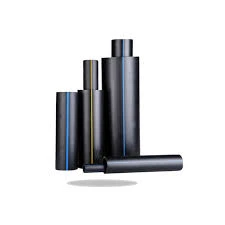Aug . 08, 2024 06:10 Back to list
Exploring the Safety and Benefits of Using Polypropylene Cutting Boards in Your Kitchen
The Safety of Polypropylene Cutting Boards
In the world of culinary tools, cutting boards are essential items that facilitate food preparation. Among the various materials used to create cutting boards, polypropylene has gained considerable attention due to its safety and practicality. Understanding the benefits and safety features of polypropylene cutting boards is crucial for both home cooks and professional chefs.
Polypropylene is a thermoplastic polymer known for its durability, resistance to chemicals, and ease of cleaning. When it comes to food safety, one of the most significant advantages of polypropylene cutting boards is their non-toxic nature. Unlike some other plastics, polypropylene does not contain harmful chemicals such as bisphenol A (BPA), phthalates, or lead. This makes them an excellent choice for kitchens where food safety is a top concern.
Another essential aspect of using polypropylene cutting boards is their ease of sanitation. The non-porous surface of these boards does not absorb liquids or flavors, which helps prevent cross-contamination between raw and cooked foods. This characteristic is particularly vital when working with foods that carry a higher risk of foodborne pathogens, such as raw meats and seafood. A simple wash with warm soapy water or a trip through the dishwasher typically suffices to keep these boards hygienic.
Furthermore, polypropylene cutting boards are resistant to stains and odors. Unlike wooden boards, which can harbor bacteria and retain scents from strong spices or pungent foods, polypropylene boards maintain their integrity over time. This feature allows them to retain their aesthetic appeal and functionality even after prolonged use.
polypropylene cutting board safe

The durability of polypropylene is another aspect worth discussing. These cutting boards are designed to withstand deep cuts and scratches despite frequent knife use. While all cutting boards will eventually show wear, polypropylene boards are less likely to develop deep grooves where bacteria can hide, ensuring a higher level of food safety over an extended period. This longevity makes them a cost-effective option for those who value both durability and hygiene in their kitchen tools.
Moreover, polypropylene cutting boards come in various sizes and thicknesses, catering to diverse culinary needs. From small boards for slicing fruits and vegetables to large ones for filleting fish or carving meats, their versatility makes them a staple in any kitchen. Additionally, many polypropylene boards feature a textured surface, which provides stability during cutting and minimizes slipping, enhancing overall safety during food preparation.
One common concern with plastic cutting boards is the potential for damage to kitchen knives. While polypropylene is less forgiving than wood, it is still considered a knife-friendly option. The surface of polypropylene is softer than glass or ceramic boards, reducing the risk of dulling knife blades quickly. To maintain the condition of both your knives and cutting boards, it's advisable to use different boards for different food types, which can also help prevent cross-contamination.
In summary, polypropylene cutting boards are a safe and practical choice for anyone looking to enhance their kitchen efficiency. Their non-toxic composition, ease of cleaning, resistance to odors, durability, and versatility make them a standout item among kitchen tools. When choosing a cutting board, considering the material is key to ensuring both food safety and an enjoyable cooking experience. With proper care and maintenance, a polypropylene cutting board can provide excellent service in the kitchen for years to come. Thus, incorporating a polypropylene cutting board into your kitchen arsenal is a wise decision for both safety and functionality.
-
Durable PP Rigid Sheet: Lightweight, Chemical Resistant Solutions
NewsAug.21,2025
-
PVC Grey Sheet for Extraction: Chemical Resistant & Durable
NewsAug.19,2025
-
Durable PVC Pipe Fittings for Plumbing & Irrigation Needs
NewsAug.18,2025
-
HDPE Steel Belt Reinforced Spiral Corrugated Pipe | High Strength
NewsAug.17,2025
-
HDPE Pipe Fittings: Durable, Leak-Proof Solutions
NewsAug.16,2025
-
Premium CPVC Sheet: High-Temp & Chemical Resistant Solutions
NewsAug.15,2025

